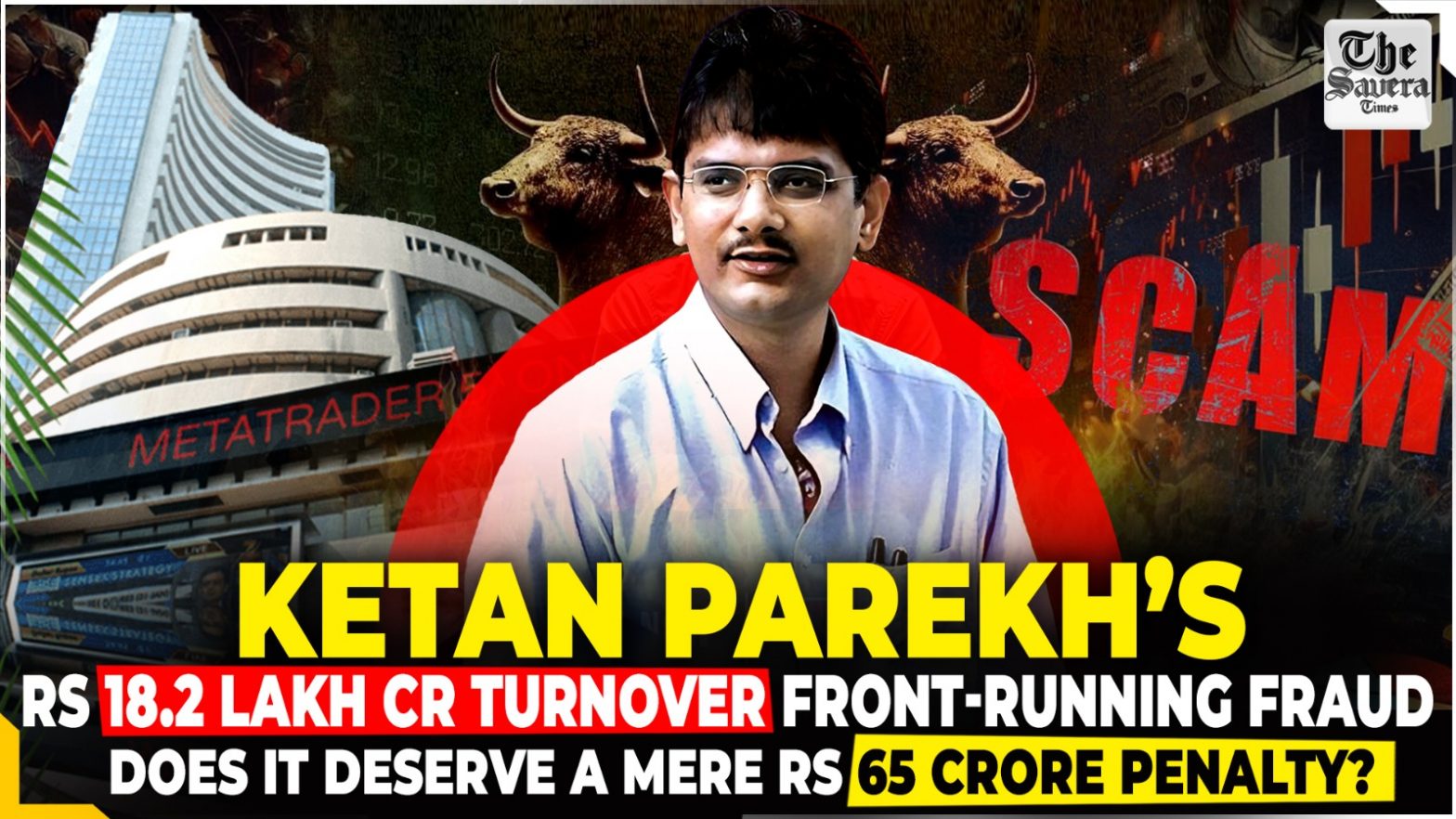
New Delhi: Decades after involvement of Ketan Parekh’s in stock manipulation in India, the infamous Parekh, a key associate of Harshad Mehta is again in the headlines of financial news in India after fresh allegations of malpractice have emerged, signalling ‘Ketan Parekh 2.0 Scam.’
The fresh allegations of Rs 18.20 lakh crore turnover front-running fraud have left regulators and investors questioning the strength of financial safeguards in the country.
Earlier in 2000s, Parekh’s involvement in stock manipulation shook the financial system and now, decades later, fresh allegations of malpractice have emerged, signalling what is being termed ‘Ketan Parekh Scam 2.0.’
Parekh a chartered accountant who rose to prominence in the late 1990s and early 2000s.Parekh had come in contact with the Big Bull Harshad Mehta in the 90s and had joined Mehta’s firm GrowMore investments, which was involved in the 1992 India stock market scam.
He was a key player in the Indian stock market, specializing in creating artificial demand for specific stocks. He was playfully referred to as “Pentafour Bull” because of his ability to sway market trends.
However, his rise was short-lived. In 2001, he was implicated in a stock market scam involving fraudulent trading practices and embezzlement of funds, leading to a decade-long ban by the SEBI.
Parekh manipulated stock prices through his ‘K-10’ stocks, causing massive disruptions in the Indian stock market. He was convicted in 2008 and banned, but it seems his shadow still looms over the market.
Now, SEBI has uncovered a front-running scheme involving stock market operator Ketan Parekh and other entities, this issue has come under intense scrutiny.
Front-running is a market malpractice where traders exploit insider knowledge of upcoming large trades to make profits. By placing their orders just before the big trades, they influence prices to benefit themselves. “This unethical practice undermines trust and creates an uneven playing field for investors.”
As per recent SEBI investigations, Ketan Parekh, along with Singapore-based Rohit Salgaocar, allegedly accessed confidential information to trade ahead of a U.S.-based fund’s transactions. Salgaocar, acting as middleman, shared trade details with Parekh. Using this information, they executed trades that manipulated stock prices and pocketed illicit gains.
However, recently, the SEBI had directed impounding of an amount of Rs 65.77 crore from Parekh, Salgaocar and other entities, ruling that they had earned it as “unlawful gain”.
But the SEBI order on Parekh and Salgaocar reveals a massive Rs 18.20 lakh crore turnover front-running fraud.
Entities associated with Ketan Parekh, generated an enormous turnover of approximately Rs 18.20 lakh crore or more in just five years, from June 2018 to June 2023, including both in cash segment and in Derivative Segment.
Moreover, SEBI says it investigated trades only between January 2021 to June 2023, in this five-years of turnover.
Trading activity was uncovered in benchmark index stocks such as L&T, Titan, Asian Paints, and ICICI Bank. However, the reported gains in derivatives may be significantly understated.
On January 2, SEBI banned KP and his associated entities for front-running trades of a major client, later identified as Capital International Group, one of the world’s largest asset managers.
As per SEBI’s order Six entities, including GDR Securities, Salasar Stock Broking, Ashok Kumar Damani, Anirudh Damani, APR Properties Private Limited, and Basukinath Properties, collectively generated a turnover exceeding Rs 1.06 lakh crore over a five-year period in cash Segment.
However, in the Derivative Segment, in the same five years, these entities had a combined turnover of Rs 17.42 lakh crore.
As Parekh has been penalised for Rs 65 crores, experts raise the question: Is Rs 65 crore sufficient penalty for Rs 18.20 lakh crore fraud?
As per veteran experts profits from front-running could range between 0.5 percent and 4 percent of total turnover involved.
Experts believe that the penalty should reflect the magnitude of the crime. However, the question is whether we need stricter penalties and better surveillance mechanisms.
